Designers of hydraulic systems for agricultural machines face some difficult challenges. This is especially true for high horsepower tractors with not only steering and brake functions, but where a great variety of hydraulic implements will be connected and towed. With the operating parameters of a farmer’s collection of cross-branded, specialty implements unknown to a tractor designer, the hydraulic system may be either inefficient due to over-sizing and over-design—or it might fail to perform adequately if under-designed. The common challenge across the entire spectrum of agricultural machinery is to create a hydraulic system that is energy efficient, easy to operate and maintain, and of course reliable. Partial automation is an absolute minimum necessity for large-scale machines where the operator’s attention can be drawn in so many directions. Agricultural machinery faces UV radiation, humidity, ozone attacking, fluctuating weather conditions and all types of natural contaminants therefore quality and integrity of the sealing system becomes a priority.
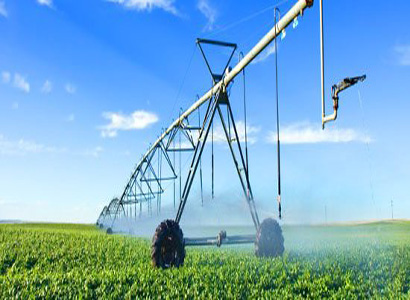
Our wide range of sealing materials and profiles gives ultimate choice to the customers to select standard and customised seals in very economical cost. We are well verse in all areas of aluminium processing industry like smelter, pot room, billet casting, power plant, etc.
Various Applications in Aluminium Industries are
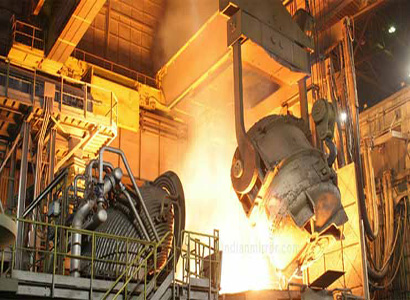
When you visit an amusement park with your family, you probably aren’t giving much thought to hydraulic cylinders. While you focus on having fun, hydraulic cylinders are hard at work, controlling the rides, providing movement for simulators and animation, and helping to keep your family safe. In all rides, particularly those that take you to the greatest heights, and those that move very quickly, precision is important. A small error in movement of the track, or passenger car, can create a dangerous situation. Rides are designed for all sorts of environments, like travelling in water, and moving over land. Some even climb as high as 450 feet into the air! Hydraulic cylinders are at work with such things as switching track paths, braking cars to safe speeds, and aligning passenger cars to a more favourable position for the rider’s enjoyment.
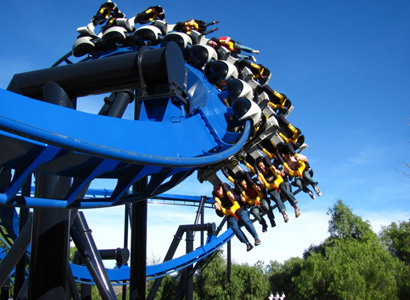
The automotive industry is experiencing enormous change, driven by environmental awareness and tough emissions legislation. Manufacturers of cars and light trucks must improve engine efficiency, lower vehicle weight and reduce emissions. Much of this can be achieved at component level. Whatever your challenges, our solutions – can help you develop low-friction, lightweight solutions that reduce CO2 emissions. Just about every automobile assembly department heavily relies on pneumatic rams on assembly jigs. Pneumatics is quieter and cleaner, and prevents a leak from contaminating other parts of the vehicle.

If you have ever wondered how an airplane is able to take off, land, and operate while in the air, the process can be summed up in one word: hydraulics. Airplanes can utilize either hydraulic or pneumatic systems to operate, but once you find out the many advantages of using hydraulics, you’ll likely wonder why they ever operated using any other system. Hydraulics are used in planes of all sizes to operate most of their equipment, such as landing gear, brakes, flaps, thrust reversers and flight controls. The reason airplane hydraulic systems are used is because they provide the perfect amount of force or pressure without requiring too much fluid, making them a big convenience for aircraft of all types. Hydraulic systems are also very reliable and offer many advantages over a pneumatic system. Hydraulics used in airplanes provides many different advantages. For instance, they are very reliable and dependable systems, and they require a small number of moving parts, which means fewer things can go wrong. They also respond very quickly to control inputs, which is important because it directly affects the efficiency and safety of the airplane. In addition, hydraulic fluid is not susceptible to compression, which means that as the plane takes off and lands, this fluid is not going to change the pressure and, therefore, the plane is more reliable and efficient. Hydraulic systems enable the plane to provide a smoother, safer ride and are especially important in critical flight situations where the pilot has to execute certain functions without being concerned about how long those actions will take or if they will happen at all.

Mining Industry needs reliable and robust sealing solutions, matching with requirements of demanding applications and severe working conditions. Sand, mud, water and fallen rocks are just a few of the challenges facing seals in mining operations. In addition, there are peak pressures of up to 250 MPa, which require a special sealing element design. High extrusion resistance is especially in demand. Parts of the seal or even the seal itself must not be forced into the gap between the design’s moving and fixed elements. That would greatly reduce the seal’s operating life.

Cement is typically made from limestone and clay or shale. There is a lot of process involved from raw material extraction till the cement powder creation and many requirements to be met by sealing components in the applications.
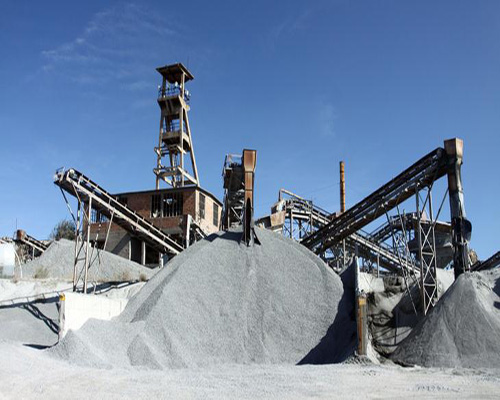
From extreme temperatures to moist, contamination-prone environments, seals for food and beverage processing equipment have to endure harsh operating conditions and cleaning regimes. All of this can take a heavy toll on the performance of the sealing solution. Proactive safeguarding is becoming the norm FDA guidelines specify that even the smallest speck of metal or plastic in a food product renders it subject to recall. This can be a costly prospect and daunting in terms of brand reputation. Accordingly, industry demand is rising for more proactive solutions such as food-grade sealing materials with optically detectable debris. To address similar concerns about bacteria, CIP and SIP systems help processors prevent bacterial growth. But caustic antibacterial cleaning agents and high-pressure wash downs increase the risk of failed seals, damaged sealing interfaces and unplanned downtime. Cleanliness, hygiene, conformity and durability – the process industry poses a variety of challenges to seals. They must have a high degree of purity and comply with hygienic design standards. At the same time, the requirements of industry- and country-specific standards, such as USP Class VI, NSF, FDA and GB, apply. However, conformity with the standards mentioned does not suffice. The sealing materials must also withstand aggressive media such as CIP/SIP cleaning agents, greases, aromas or chemicals and extreme temperatures.

The aim of any product or device in the Healthcare & Medical industry is to improve the patient’s quality of life. Due to the extremely personal nature of the industry, any part, product or device produced is critical in nature. High quality and reliability are essential. Because the synthesis of pharmaceuticals in the pharmaceutical industry does not produce any unwanted by-products or allow germs to enter the product, the purity requirements for the process and the product are particularly high. This requires sealing solutions that reliably prevent contamination and can come into contact with the product without having to worry. The pharmaceutical industry consists of many different applications and processes, all of which have individual requirements. The manufacture of finished pharmaceuticals, for example, requires very good chemical resistance of sealing materials to various educts and solvents. Very low temperatures can occur in the production of vaccines or proteins and in the separation of blood, which requires seals that are very resistant to cold temperatures. These and many other requirements present sealing solutions in the pharmaceutical industry with new challenges every day.
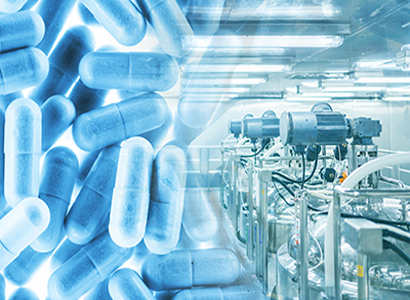
In Textile Industry, there are numerous applications where the demands on sealing and isolation materials are high with respect to resistance to heat. To be able to pick precisely right product, it is essential to base your decision on the temperature at the sealing location. Textile machinery utilizes pneumatics to cope with compact spinning, high pressures, and constant rotation of the air rams. As the world’s population continues to increase, demand for clothing rises, too – and thanks to pneumatic seals, textile manufacturers can keep up.
Various applications are;
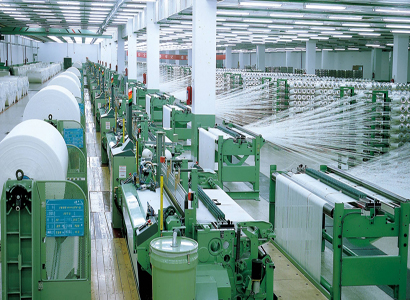
Despite gains in operating earnings and production volumes, this industry is being reshaped by several megatrends, including globalisation, environmentalism, digitalisation and e-commerce. Industry-wide shifts stemming from these trends—along with heightened competition and increasingly stringent health, safety and environmental regulations—are increasing costs and making it harder than ever for producers to stay profitable. With intense competition and increasing regulatory demands, the pulp & paper industries are finding it harder and harder to be profitable due to the high costs of energy and raw materials. The intense pressure of the pulp & paper industry to be profitable have cause mills to be more efficient and fast in production. We have developed many fluid sealing products that meet the specific needs of the paper, pulp and board industries. These have special characteristics such as excellent resistance to highly abrasive media, hot and highly caustic slurries, and non-contaminating qualities for fine paper production. Rotary shaft seals play an important role in the success of the paper and pulp industry, serving in a variety of equipment applications, including:
Without properly functioning seals, this equipment is subject to expensive, time-consuming breakdowns that can mean the difference between staying in the black and sinking into the red.
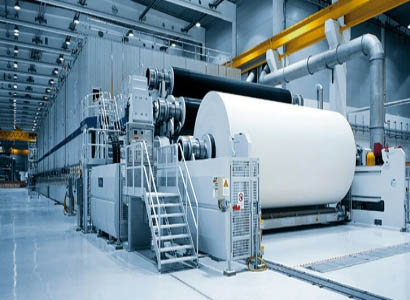
Injection Moulding Machines are one of the most challenging applications in hydraulics. Sealing elements are critical in total performance of the injection moulding machines and subject to long working hours with hard operation parameters.

The machine tools industry is of strategic importance, both economically and technologically. With the equipment design and manufacturing processes based on a combination of mechanical engineering technologies and digital control technology it is at the forefront of the fourth industrial revolution. There are exciting opportunities for further automation, with digitalization being a core enabler. The key target to optimize overall equipment effectiveness (OEE) is more important than ever – with reliable performance and sustainability in focus. Machine tools and manufacturing equipment operate in high-demand environments. Sealing solutions in this industry must be long-lasting and ensure continuous operation. Simultaneously, machine tool operators need a solution that can meet the large turnover and increasing speed and precision requirements. Seal materials should be superior to withstand extremely high speeds and severe temperature fluctuations. This is essential for an environment as high-demanding as manufacturing. For manufacturing customers, this means they can "drive" their machines faster and thus manufacture much more economically. Excellent seal effectiveness prevents leaks and the resulting machine breakdowns – reliably and lastingly. Costly downtime is eliminated. Service and repair expenses are also noticeably reduced.
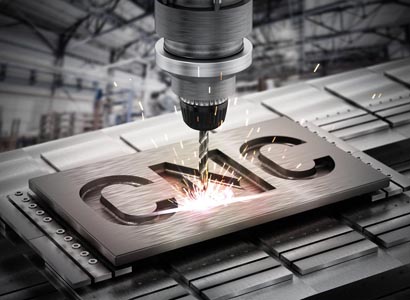
Steelmaking is an industry forever powered by hydraulics. So severe are the applications, no other method of actuation makes sense — the heat, the force and the danger are all extreme and only something capable with fluid under pressure. So prolific are hydraulics in steel mills, that a plant can have hundreds of power units. A coke oven itself needs hundreds of cylinders to process coal, and the ambient heat in the process at the doors, cars and pushers is intense, to say the least. Long maintenance intervals, variety of applications and challenging working parameters require proven sealing solutions. We combine application engineering with modern designs and application specific materials, suitable for the requirements of metallurgical steel mill applications.
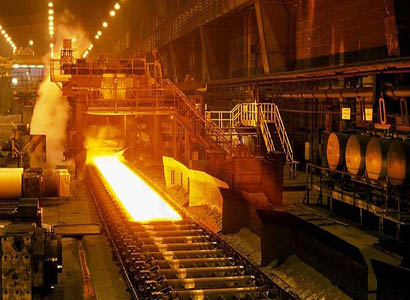
Seals have important jobs to fulfil on various pieces of equipment at hydroelectric facilities, including gates and turbines to minimize friction and corrosion. Seals can protect against the intrusion of water and dirt and minimize leakage. The applications based innovative materials and approaches designed to provide for reliable long-term operation while minimizing wear and leakage. As a result, the hydro project owners have gained confidence in the operation of their facilities and, in many cases, saved money and/or time.
The main applications are
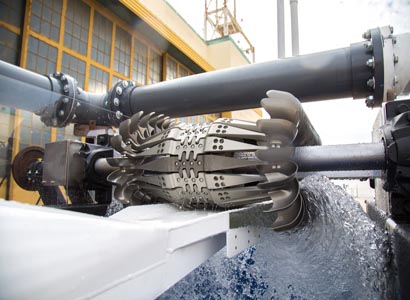
The wind industry is under enormous pressure to reduce cost per MWh by improving turbine designs, raising performance, increasing reliability – all while reducing maintenance costs. Wind turbine operators must ensure that their assets remain operational for as long as possible. Turbines often operate under tough conditions – offshore, in cold climates or remote locations – which can limit their performance and reliability. High cost of repairs and long lead times for replacement parts can make energy generation uncompetitive. Our unique ability to custom design seals in PTFE compound and polyurethane that substantially outperform standard parts. They offer lower friction, greater reliability and are more resistant to extrusion. The time and cost involved in replacing turbine seals are far too valuable to rely on standard parts.

Various waste management and recycling equipment work with hydraulic equipment. These equipment rely on durable hydraulic seals for effortless functioning in harsh and demanding environmental conditions. Hydraulic systems can easily perform tasks that are otherwise impossible with other forms of power transmission. The waste and recycling industry presents several opportunities for hydraulic tools to outshine their competition. Many hydraulic tools form parts of greater hydraulic hybrid systems. These systems often act as the primary power source for waste removal vehicles like:
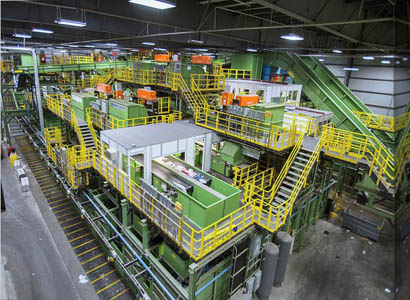
Hydraulic cylinders are the preferred actuators for oil and gas applications due to key characteristics of high power-to-size ratio, constantly held force and torque, and durability in harsh environments. The small and compact form of hydraulic cylinders enables the effective utilization of powerful, heavy-duty, and lightweight equipment to conduct narrow hole drilling and efficient pipe handling. The pipelay activity in oil & gas industry uses a lot of equipments like cranes, winches, pipelay superstructure... that use the hydraulic power of hydraulic cylinders.
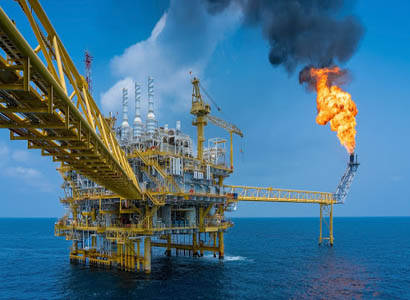
The construction and infrastructure space has a growing need for off-highway and heavy-duty equipment capable of carrying out labour intensive mechanical activity. Site reclamation, decommissioning and decontamination, and large-scale construction projects are just a few worksite examples where equipment is expected to provide optimal performance during long operating cycles. Whether being used to steer, lift heavy materials, or stabilize equipment during operation, the hydraulic systems and cylinders found in this equipment push operating parameter limitations and specifications. As construction managers improve work-site efficiencies to meet productivity requirements and streamline operations, the level demand on critical equipment and related sealing components increases.

The wipers and barrier components found in robust hydraulic systems are essential in keeping hydraulic fluids contained and safeguarding against external contamination. Each of these components becomes critical to ensuring seamless operations that protect equipment and personnel from disaster. Seals are included among the high-performance products that are essential for hydraulic fluid containment and optimal cylinder performance. They also help protect people and the environment. OEMs rely on knowledgeable suppliers to select construction equipment products designed for the temperature, pressure, and shock loads of severe operations. Their expertise helps equipment design engineers avoid costly, disruptive product and material failures. Earth moving equipment, dump trucks, cranes, and heavy-duty off-road vehicles comprise a long list of construction and infrastructure worksite tools used worldwide every day. Each machine is powered by at least one hydraulic cylinder, and each cylinder relies on a variety of seals. However, no single seal size or profile fits all. The solution depends on the application or task each piece of equipment performs. Construction equipment faces challenging environment, longer working hours and extreme conditions. We provide reliable and superior sealing solutions designed and developed specially for each application
Before recommending a sealing solution, our engineers examine the precise application and gain a full understanding for the unique characteristics for each piece of equipment. Including operating conditions, fluids, temperatures, pressures and the condition of the equipment itself. All of these factors can play a significant role in the final product as well as productivity and reliability. We don’t just replace seals, we help customers save money and increase dependability. At work in virtually every industrial process, available in every possible shape and size, gear units and drivelines face an extremely wide range of operating requirements and conditions. Regardless of industry or application, all industrial transmissions share a common set of challenges – they must perform as reliably, efficiently and cost-effectively as possible. Strong forces with moderate movements, extremely variable forward and return stroke speeds, extremely short strokes at a high number of cycles, in some cases under a continual load or with fast load changes – the operating conditions for seals in hydraulic cylinders for industrial presses and injection moulding machines are diverse and always challenging, this requires technical excellence.
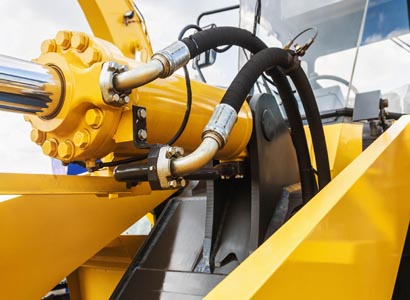
Nowadays sea travel without hydraulics is unthinkable. Hydraulic drive systems are used to power essential operational units on ships. Whether you are operating a single vessel or an entire fleet, challenging sea conditions, rising costs and increasing environmental and safety regulations are affecting profitability and operational efficiency. Technical knowledge gaps and reduced crew numbers are other obstacles to overcome; staying ahead in the marine industry requires a concerted effort across many fields. Our marine solutions are designed to provide easy, reliable, cost-efficient products and services that are intended to keep operations running smoothly. Shipbuilder needs very reliable equipment because maintenance on the oceans is very difficult, a minimum of spare parts is on board, and hydraulic cylinders are often not a part of it. Hydraulic cylinders must therefore resist to long overseas travels. The need of custom cylinders adapted to marine atmosphere is obvious.
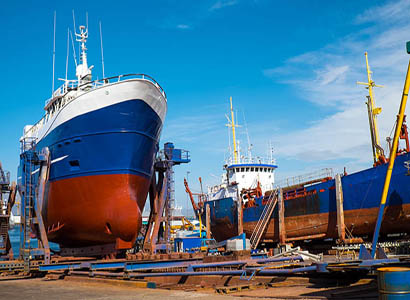
Below listed are some of the applications used in tyre manufacturing process:- Indexing cylinders, Banbury Mixer, Mixer ram cylinder, Curing Press, Actutor cylinder, VCL Cylinders, Top Ring Cylinder, Lower ring cylinder, Segment mould opening cylinder, Unloader and loader cylinder, Squeeze cylinder, Centre press mechanism, Tandem cylinders, Triplex Head open close cylinder, Bucket Cylinder, Bamtry seal kit, Shaping drum application, Rotary actuators.
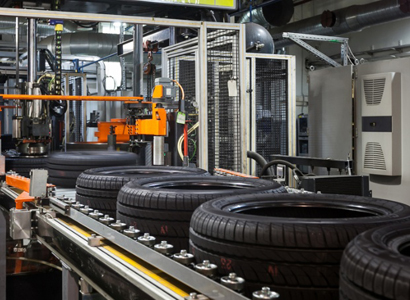
Whether your facility is manufacturing particle board, plywood, chipboard, OSB, MDF, HDF, OSL, THDF, or bio-composite boards, we have sealing solutions for your specific needs. We delivers proven expertise coupled with custom polymer sealing solutions for presses and cylinders, as well as specialty lubricants for chain life extension.
Main applications are:

Material handling applications covers a wide range of equipment designed to perform indoor and outdoor logistics. In all modern equipment sealing solutions are expected to provide excellent dynamic and static sealing, low friction property and sufficient guiding.

Fluid power components perform critical functions and are used in a wide range of equipment, from tractors, excavators and other off-highway equipment to manufacturing machines, such as injection moulding machines and presses. Components and seals must be reliable, long-lasting and capable of operating in harsh conditions. Fluid power applications are challenging for seals. Not only must the hydraulic seals prevent leakage, but seals must also withstand high pressures, extreme high and low temperatures and transverse forces within the cylinder.

The demands of machinery used in off-highway applications continue to grow. Equipment is expected to work harder and for longer periods as productivity levels are driven up. Pressure, temperature, side loading and shock loads are all major factors that have to be addressed, as is the need to keep the system free from external contamination. The necessity, therefore, to provide a high performance, quality sealing system capable of meeting the requirements of this demanding sector is absolutely essential.

In a nuclear plant, elastomer seals must function in many environments that do not exist or are uncommon in other industries. The best known of these is ionizing radiation, but nuclear seals often face high temperature water or high levels of ozone also. Performance requirements are unusually high because of the cost of breakdowns and maintenance in radiation fields, plus the need to keep the reactor safe at all times. In equipment for nuclear plants, manufacturers usually supply elastomers (i.e., rubber-like materials) that are essentially identical to those they supply to other industries. Sales to nuclear plants are rarely large enough to warrant development of improved compounds, and data relevant to severe nuclear service rarely exist for commercially popular compounds. This sometimes results in equipment with seals of inferior or inappropriate elastomer compounds, or compounds of uncertain durability in service. It has also led to a proliferation of compounds being used, since each manufacturer has different favorites. Upgrading and standardizing on a handful of superior materials can greatly improve integrity, service life, and overall cost.

We offer sealing solutions for diverse applications of Hydraulic Presses.

Semiconductors are present in many common electrical and electronic devices. As semiconductors have evolved over the years and become more integrated, cleanliness and purity during the wafer manufacturing process have become essential. At the same time, fabrication requires the use of aggressive liquids, gases and plasmas and occurs under extreme temperature and pressure conditions. The requirement of purity in combination with a harsh environment presents many challenges. Our high-performance seals are engineered to withstand the toughest conditions guaranteeing the cleanest environment for semiconductor device manufacturing. The semiconductor manufacturing process is extremely aggressive and seals are invariably housed in areas of the processing system where they need to withstand highly corrosive liquids, gases and plasmas often at elevated temperatures or in vacuum conditions. Trelleborg Sealing Solutions is a leading developer and manufacturer of high performance sealing options and we work together with you, our customer, to establish the optimum seal material and design to maximize the performance of your semiconductor manufacturing equipment.
We offer sealing solutions when it comes to the generation, storage and transmission of power and energy in the most diverse fields and applications of industrial technology. This involves industrial engines and transmissions, pumps, cylinders, valves and actuators, brake systems, axles, wheel hubs and tire pressure control systems. It is all about pressure-, temperature- and media-resistant, efficient, reliable and durable sealing solutions and accumulators. Both standard and special tailor-made solutions that meet every requirement. As power generation increases to meet growing global demands, energy storage systems become crucial. Consider, for example, solar cells that produce electricity during the day to recharge electric vehicles at night. A smart grid requires high-performance energy storage options like redox flow batteries and lithium-ion battery storage to support such capability. As links and buffers, they balance fluctuating energy production against fluctuating consumption and establish a safe, reliable energy grid.
Various Applications in Power Plant Industries

In all sugar processing plants there are various types of rotating equipment requiring sealing devices. With the increasing demands for enhanced efficiency, reduced waste and effluent, together with improved equipment reliability there is now an industry move from traditional sealing methods. The utilization of such seals ensures plant uptime.
The various Sugar mill applications are:

Sealing pumps, valves, tanks, fluid metering devices and reactors in the chemical processing industry requires elite materials which offer excellent chemical resistance to various forceful media. Seals are key components for the operation of chemical plants. Rotating equipment, for example, pumps, agitators and compressors; valves and flanges and also pipes and pipes conveying gases and fluids must be dependably sealed.
Various Applications in Chemical Fertilizer:

Due to the special properties of paper, Pneumatics is essential in printing press processes. It is required for a variety of applications in the pre-press area, including preparing images and film for scanning or exposure and for copying printing plates. There are also many applications where over-pressure is needed as well, such as for guiding plates or film in automatic systems. In classic sheet fed offset presses, vacuum and overpressure is always needed for paper handling – at the feeder to separate the sheets, to feed the single sheets to the different colour-aggregates or to guide the sheets through the machine. All these applications need different amounts of air at different pressures. There are a variety of applications in the post-press arena. For example, side-channel blowers for folding and cutting machines; pressure-vacuum pumps and individual vacuum pumps and compressors for collating and book-binding machines; and radial blowers for removing waste paper. A variety of printing equipment relies on pneumatic control systems to print text, graphics or barcodes on items such as corrugated boxes, labels and t-shirts. Pneumatic components are also used in bindery equipment to bind books and manuals.

Hydraulics and Pneumatics can be found in nearly every industry, including the commercial transport sector. How are pneumatics used for rail roads? Practically every major assembly has oil and air power behind it. If you’ve ever watched a high-speed train take a corner, it looks like an amazing feat of engineering. You can thank pneumatics technology for the smooth and uneventful turns. Compressed air keeps each rail car on the track while forcing the cabin to remain level. The riders don’t notice much of a tilt as a result. The compressed air also controls the individual cars so that they tilt when necessary. Without pneumatics on a rail transport car, those sharp turns would be challenging. The commercial transport sector connects vehicles and rail cars together with pneumatic couplers. Without these devices, cargo movement would be incredibly slow. In fact, they wouldn’t be productive or energy efficient at all. Compressed air allows a rail car to connect or detach from another one. This technology is used throughout each day of the year, which makes it critically important for every industry.

Rail roads don’t limit their pneumatics use to just the functional aspects of the cars. There are countless interior conveniences that go along with each car. Compressed air is cost effective in nearly any design. It allows you to have a comfortable experience on a rail transport car without noticing the ingenious components hidden within the structure. The construction sector is full of vehicles that take on extreme loads around local railways. They might drive these loads off of the project site and onto the surrounding roadways. Pneumatics makes it possible for the vehicle to maintain a smooth ride whether it’s hauling a load or not. The compressed air moves along with the load while automatically adjusting the vehicle’s height or orientation. This particular application reduces costs and wear on the vehicle as the years go by. From a bad fuel pump to steering issues, every vehicle has its breakdowns from time to time. Rail cars can’t afford to have braking problems, however. Pneumatics is designed for reliable braking. They offer strength and adjustable parameters. One of the major highlights of pneumatic brakes are their size and weight. They’re extremely compact, which allows the rail car to have extra space for other components. Considerable power is found within the brakes, and that fact produces a safe ride every time. Other key applications are Brake control systems, Sanding Control Systems, Shoe Gear Control Systems, Tilting Train Control, Heating and Ventilating Control, Passenger Seat Adjustment. Vacuum Toilet and Water Control Systems, Pantograph Operation, Internal and External Door Actuation and Control, Door Step Control, Coupling Systems Engine Retarder Control and Horn Operation.
Robotic system designers should choose the right power source for the job. Often, electric motors are chosen without thinking about the benefits of hydraulics or pneumatics. For applications where precise control of large forces and smooth motion are required, or applications that require “forgiveness” in the motion, fluid power can deliver significant benefits compared to electromechanical motion. Conventional electric motors are well suited to applications where the predominant form of motion is rotational. They are easy to control and can be the least expensive power source in small systems that have few axes or light loads. Linear electric motors, although more expensive, have advantages in positioning applications where motion is linear and where quick direction changes are required. Hydraulic motors and actuators can do practically everything that electric motors can and have several advantages in heavy machinery applications.

Hydraulic actuators can lift and hold heavy loads without braking, and can move heavy objects at slow speeds or apply torque without the need for gearing, while consuming less space and producing less heat at the actuator than electric motors. Electric motors must be sized for the maximum load applied; hydraulic pumps need to be sized only for the average load. Hydraulic actuators are also comparatively small. The hydraulic advantage is greatest when there are breaks in the motion, as the accumulator stores energy while the system is not moving. Electric motors make sense in applications with continuous motion. An electric motor is typically located close to or directly on the motion axis. In fluid power systems, the air or hydraulic pump may be located remotely. Only the accumulator and control valves need to be located near the actuators. This can make fluid power an ideal motive force for robotics applications with many axes. The pump can be mounted in a base location, keeping the weight on the robotic arms low. Sharing a pump between multiple-axis actuators can result in a cost per axis that is lower than the equivalent system employing electric motors. With hydraulics, pressure can be held constant without applying significantly more energy. Driving an electric motor to apply constant torque could cause overheating. In material transfer applications that are prone to binding due to mishandling of material, fluid power may be more forgiving of jams than electromechanical power. Pneumatic grippers and rotators, along with vacuum devices, are common components of many industrial robotic systems — pneumatic motion axes requiring precise positioning less so. The natural “give” of pneumatic motion technology, while a detriment to fast pick and place applications, can be of benefit elsewhere, such as in physical therapy. The inherent “give” is a safety benefit. Acceleration-limiting algorithms (active damping) can make electric and hydraulic axes mimic this behaviour, but such is dependent on proper functioning of various sensors and algorithms. If something fails, the axis could move suddenly with full speed and force. Hydraulics has advantage when heavy or unpredictable loading can overload the actuator; pneumatics can have advantage when softer motion is desired. Electric actuators do not do well in either case, having the possibility of harsher motion than pneumatics and handling overloads less gracefully than hydraulics.
Precision matters in the equipment protecting soldiers and maintaining safety and freedom. Miniscule variations in a hydraulic cylinder can mean the ultimate consequences.
Key applications are:

Glass industry which rises with skyscrapers needs particular interest in all processes. The machines, which are used in glass industry, operate ten times more delicate tolerances than heavy industry. When material you work on has brittle structure, naturally you need to be more delicate in manufacturing processes. Your manufacturing process should be fast in order to respond demands of the market as well as delicacy. Under all of these conditions, manufacturing plants desire to work with companies which keep up with their speed and offer right solutions in glass industry which must be both fast and attentive. In ceramic industry, the biggest problem that our customers experience is malfunctions due to severe abrasions in circuit elements because of dirtiness that ceramic raw material causes in hydraulic systems. In addition to this, life of dirty oil is shortened and hydraulic oil costs of company increases so much more.

We understand the special need of glass industry with its hydraulic system solutions and renders services by considering apprehensiveness of its customers. Glass manufacturing is a continuous process that involves enormous thermal masses, both in the glass melt and in the production line itself. Depending on the type of machine, once commissioned it may run round-the-clock for a decade or more. Others may go through changeovers as often as several times a week. In either case, reliability is essential, as is performance. Hydraulics and Pneumatics have played an increasingly important role, ranging from performing peripheral tasks to powering entire machines. Offering accuracy, performance and tight control, motion control is helping the glass industry achieve new levels of economy and efficiency.